Cartagena de Indias, Colombia – not to be confused with the one in Spain – is known for its beautiful old town.
Inside, you’ll find pastel-hued buildings in red, yellow, and blue alongside flower-slung balconies – a stunning jewel-box of architecture, albeit one that was built by the Spanish colonists using the labor of enslaved people.
Despite this history, the people of Cartagena are as warm and colorful as their city. Local Afro-Caribbean women known as Palenqueras dress in multi-colored garb and sell fruit from streetside stands, while others dance to rhythmic drum music in the many squares dotted across the city.
Cartagena feels like one of Colombia’s liveliest cities, and it’s true that the “walled city” itself offers plenty of things to do as I discovered when I spent a few weeks in the area.
However, these day trips from Cartagena give you a chance to dig deeper into the region, whether you’re seeking to observe bioluminescent plankton off picture-perfect beaches or want the soothing experience of bathing in volcano mud.
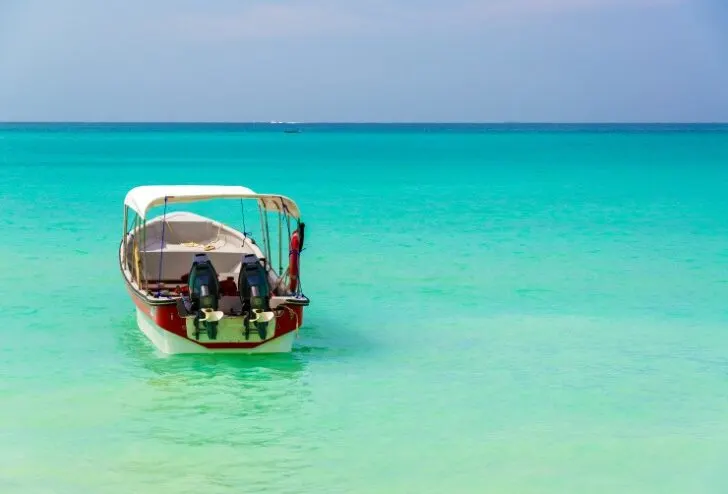
1. Fish with local fishermen in La Boquilla
La Boquilla – a fishing village 17 kilometers north of Cartagena – is famous for having some of the best beaches in the area and, because they’re not a hub of partying like others in the region, you can expect clearer water and rubbish-free beaches.
Swim, rent a jet ski, or bike along the coastline; pick whichever activities you like!
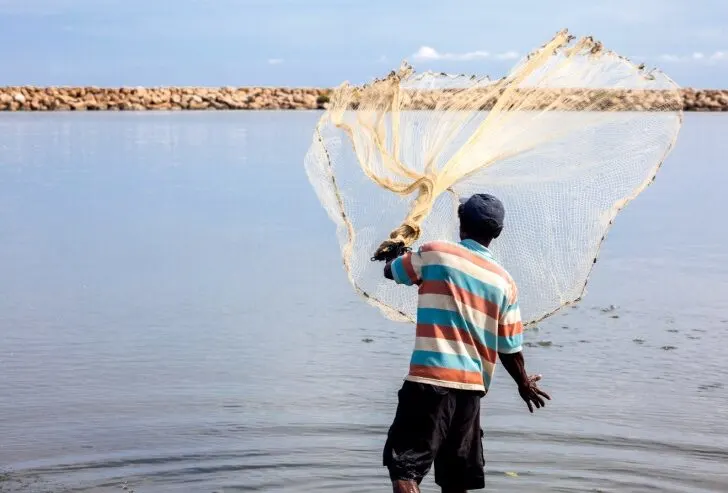
But to truly experience La Boquilla, you need to get out onto the ocean. Head out by boat on La Cienaga de La Virgen, a lagoon known for its series of tunnels through mangrove forests that cling to the coastline, or to the Cienaga de Juan Polo. Here you can learn different fishing techniques and catch everything from sea bass to sea bream, mullet, and crabs.
For a tour that supports the local community at La Boquilla – which is being threatened by uncontrolled building expansion – and helps maintain a culture of fishing here, visit with this four-hour tour* ($61 USD pp).
If you’re not so keen on fishing, you can instead opt to explore the mangrove swap by canoe* ($30 USD pp).
2. Learn the traditional rhythms of Colombia’s Caribbean coast in La Boquilla
Thanks to the region’s Afro-Colombian roots, Colombia’s Caribbean coast plays host to a unique blend of rhythms brought over by those enslaved by the Spanish, and which still exists today.
Believed to have been born in Cartagena, cumbia is now a type of rhythm known throughout the world thanks to its use in modern Latin pop music.
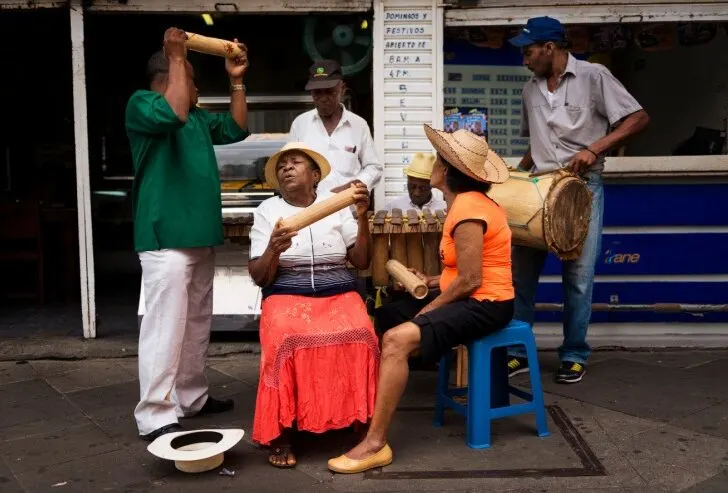
Discover more about the irresistible beats that make up the Caribbean coast’s musical history with a day tour from Cartagena to a local music school ($180 USD pp)*.
You’ll learn from teachers and drum makers about how the drums themselves were used as a way of communicating and resistance when slaves were first brought to the Americas, as well as having a go at playing them yourself.
3. Take a tour out to Colombia’s prettiest town and learn about its musical heritage
If you’re short on time but still want to explore the best that the Bolívar Department of Colombia has to offer, consider heading out to what has to rank as one of the country’s prettiest places: Santa Cruz de Mompox.
Known simply as Mompós or Mompox, this colonial-era town gives a sense of what Cartagena might have looked like before the gentrification and influx of wealthy tourists.
Known for its strong tradition of goldsmithing, it’s the perfect place to buy jewelry and other such souvenirs or just stroll along the Río Magdalena upon which this historic little town sits.
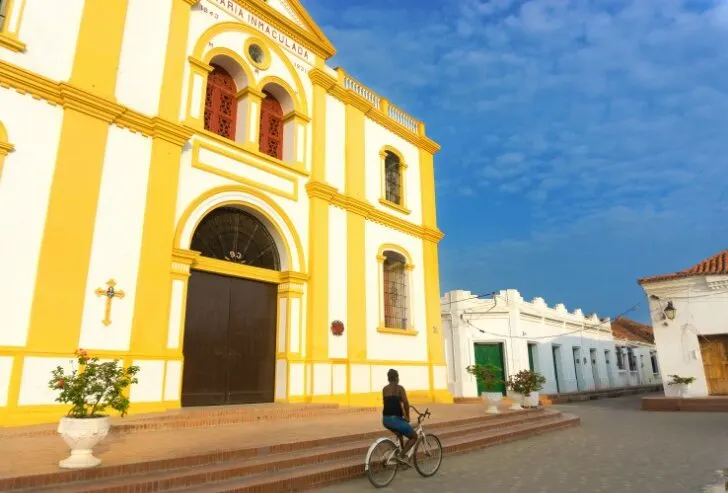
If you want to dive deeper beneath the surface, try this two-day, one-night tour from Cartagena ($1,051 USD pp)*, which takes you to Mompox and gives you the opportunity to meet a local dance school to learn about the region’s musical and dancing heritage, as well as a tour of the town’s stunning streets.
If you’ve got more time, take the bus from Cartagena to Mompós (5.5 hours; 70,000 COP ($14 USD)) and stay in one of the town’s flurry of delightful boutique hotels, such as the Bioma Boutique Hotel ($90 USD double), with its wonderful rooftop terrace with a hot tub and unforgettable sunset views.
4. Jump into a volcano crater at El Totumo, Santa Catalina
Believed to possess a healing ability, El Totumo volcano attracts both domestic and international tourists alike. It’s not as you’d expect, however: standing at only 15-meter tall, it’s one of the world’s smallest volcanoes. It used to spew lava – allegedly – but now produces just mud enriched with sulfur, iron, calcium, and silica, among other minerals.
The local lore has a different idea regarding what makes the volcano able to heal through its mud. Believing that the spewed lava was the work of the Devil himself, a priest performed a ceremony to banish him by pouring holy water into the volcano.
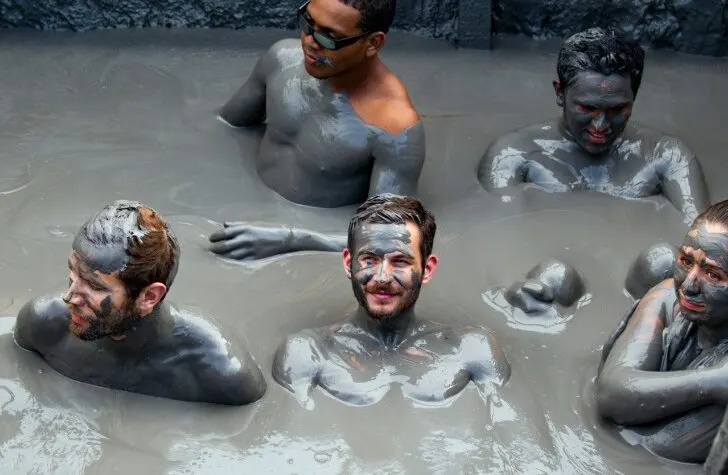
Visitors may climb into the volcano – via a staircase built on its side – to bathe in the warm, muddy crater. You won’t be sprinkled with holy water, though. Instead, you may request massages from the attendants for $10,000 COL (around $2 USD) while rinsing up in a nearby lagoon.
Going there on your own is not recommended: you end up being charged significantly more at the entrance to the volcano if you come independently than with a tour.
Instead, visit with this private tour ($103 USD pp)*, which departs from Cartagena at 7.30am in order to reach the volcano before bands of other tourists do.
5. Take a road trip to the pink sea of Galerazamba
Only 20 minutes away from El Totumo volcano, you’ll find another unique landmark: The Pink sea. Due to its high levels of salt, the water turns pink.
However, the strength of its hues does change according to the weather, and during January and February, and from August to September, the waters are typically at their pinkest.
This is highly influenced by the climate, so there’s never any guarantee as to what shade you’ll see. It’s also worth pointing out that you can’t swim in this water.
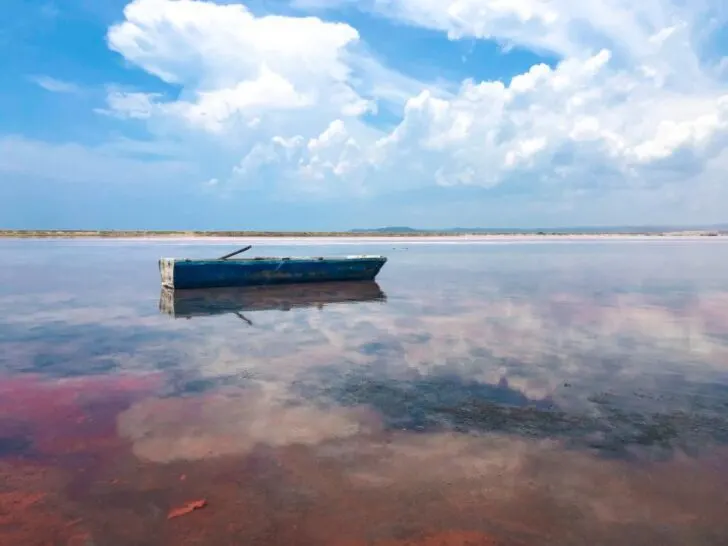
Galezaramba itself doesn’t offer much when it comes to dining and lodging options. Go for just the day; you can get here by bus to Galerazamba from Cartagena for just $20,000 COP ($4 USD) or take a taxi from Cartagena and ask it to wait for you.
This should cost around 150,000 COP ($31 USD) in total – which is a great choice if you’re traveling in a group. Some El Totumo tours also include a visit to Galerazamba.
6. Be dazzled by bioluminescent plankton in the waters of Playa Blanca, Isla Barú
Only developed for tourism in the past decade, Playa Blanca is the epicenter of Isla Barú, a peninsula 30 kilometers southwest of Cartagena’s old town. Thanks to this distance from Cartagena itself, Playa Blanca boasts crystalline waters and gloriously white sand.
At night, some parts of the coast are visited by bioluminescent plankton that turn the water to glowing blue. They are not shy of human touch so you can swim around them safely!
Despite its distance from the old town, Playa Blanca is quite easy to reach; one of the many reasons it’s among the most popular day trips from Cartagena.
The easiest way is to get on a taxi that will cost you from $40,000 COL ($10 USD); alternatively, many of the tours to the Islas del Rosario will take you here en route to the islands.
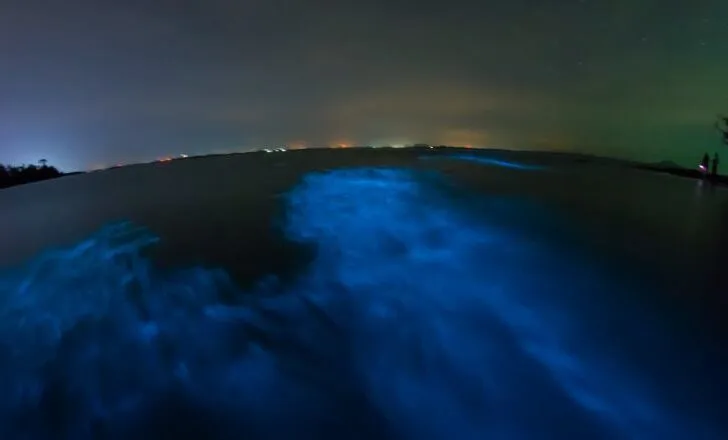
Staying overnight is the best way to avoid the hordes of tourists who descend on this beach during the day. The gorgeous bungalows of Las Islas ($416 USD double) overlook the ocean, while they run snorkeling, cooking classes, and a tour to visit the bioluminescent plankton.
If you want to do it independently, hire a taxi from your accommodation and ask to be taken to where the plankton is most active – and this typically happens around 7pm and 8pm at night.
Looking to dive deeper into Cartagena’s rich heritage?
If you want a deeper, more meaningful dive into the Cartagena region, I highly recommend local tour operator Impulse Travel. They’ve established tours across the area and further afield in Colombia with their focus trips that take you to lesser-known destinations to not only learn more about the local people but ensure that your money benefits them, too.
Their eight-day Sounds of Colombia is a great example: through it, you’ll learn why Colombia is known as “The Land of a Thousand Rhythms”, meet talented traditional musicians, and visit two stunning UNESCO World Heritage Sites.
Mention WORLDLY5 to receive a 5% discount on the tour.
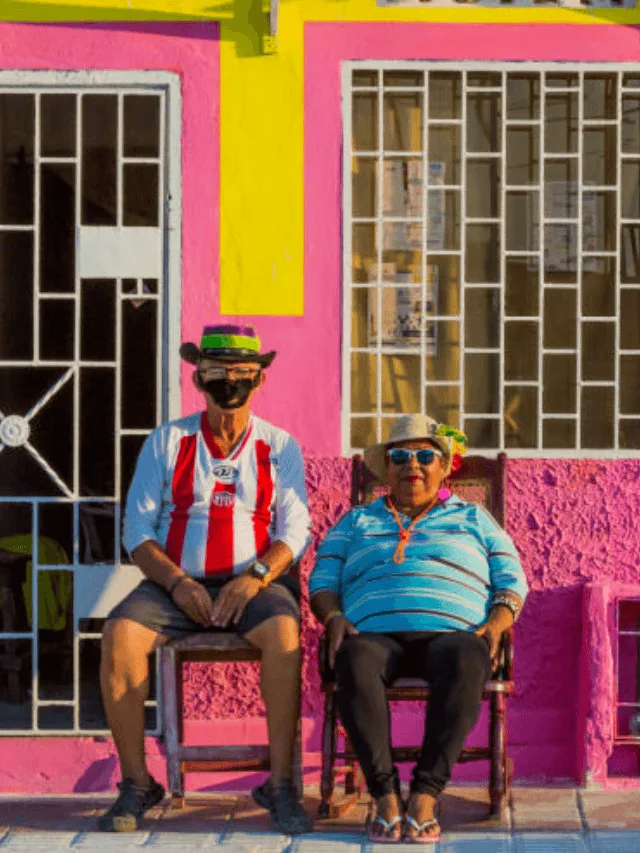
7. Snorkel in the aquamarine Caribbean waters of the Islas del Rosario
Fancy exploring a slice of paradise? Cartagena lies on the Caribbean Sea and the most idyllic tour from the city takes you out to the Islas del Rosario, a 45-minute boat journey south.
Made up of 28 different islands, this archipelago is protected as the Parque Nacional Natural Corales del Rosario y San Bernardo, under the known for its snorkeling and scuba diving, which allows you to take advantage of its crystal clear waters, coral reef, and abundant array of shipwrecks.
While a day trip to the Islas del Rosario allows you to appreciate the area’s dazzling white sands and turquoise waters, we highly recommend staying overnight at one of the comfortable guesthouses or hotels located on Isla Grande or Isla del Rosario.
We recommend Casa Tinti Boutique Hotel ($160 USD double), on the remote Isla Tintipan, with its beach-facing bedrooms and delicious menu.
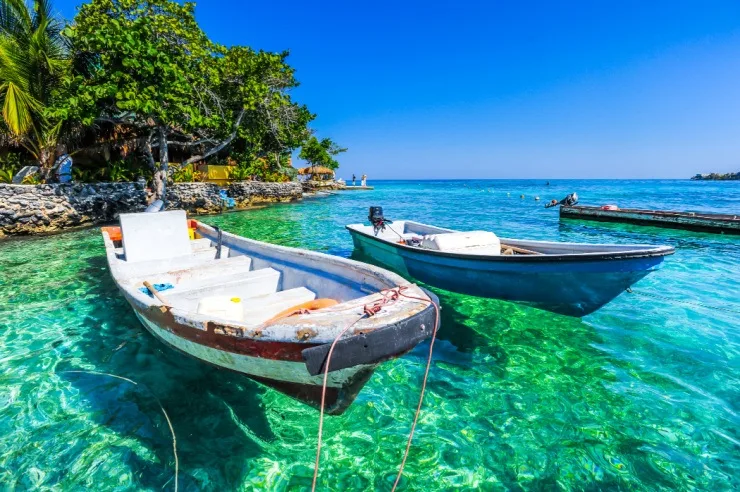
To get to the islands independently, purchase a boat ticket at the Muelle Turístico de la Bodeguita. Fares range between $70,000 COP and 100,000 COL ($16-23 USD), with departures normally around 8am and returning around 4pm.
These tours will take you on a well-worn route around some of the larger islands; for a quieter and less-touristed experience, try this eight-hour tour to Isla del Sol ($83 USD pp)*, a private island where you can relax, snorkel or kayak to your heart’s content.
8. Learn about the culture of the Palenqueros in Palenque de San Basilio
One thing you’ll notice when arriving in Cartagena is its diverse population, with many local people descending from the original African slaves brought to build the city by the Spanish.
Here, you’ll find Palenque communities, otherwise known as “free towns”. This moniker describes their status as settlements where self-emancipated slaves fled the Spanish colonizers in the 16th century.
Situated south of Cartagena in the foothills of the Montes de Maria mountain range, the town of Palenque de San Basilio is the oldest Palenque village in the Americas and was even acknowledged by UNESCO as a Masterpiece of the Oral and Intangible Heritage of Humanity – making a must-visit while in Cartagena.
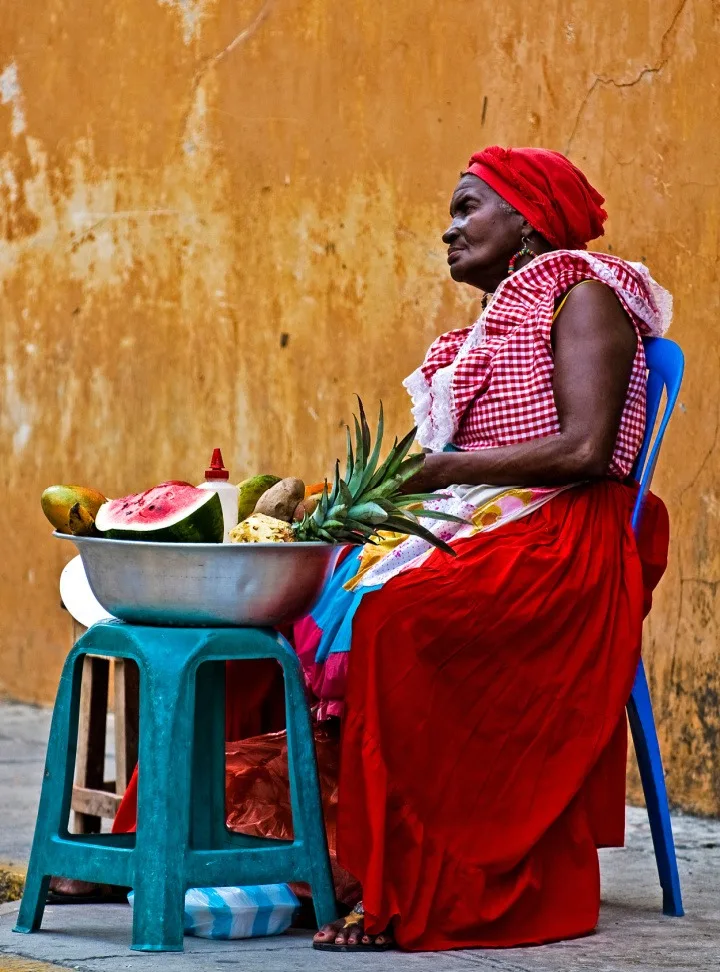
Its deep-rooted history promises an experience unlike no other, granting you the opportunity to learn about the history and culture of Colombia’s Afro-Caribbean people.
The best way is as part of a tour ($143 USD pp)*, where you can get a glimpse into their lives and how they continue to preserve their distinctive Afro-Caribbean culture.
9. Dance ‘till you drop in Barranquilla
Barranquilla is mainly known for two things: Shakira and its annual folkloric carnival. Once a year, for four consecutive days, the city is lit with parades of music and dancing. If this sounds like your cup of tea, plan your trip around the second Saturday of February.
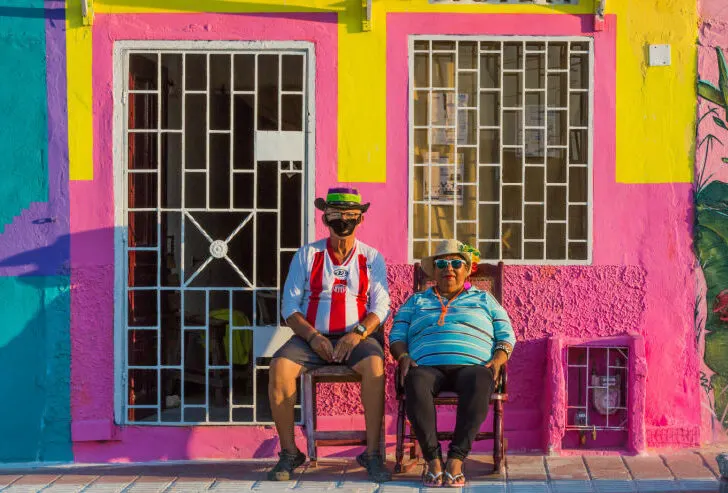
With that said, those who are not into sweltering parties should not take Barranquilla off their list. Outside of carnival time, the city is rather quiet and relaxed and perfect for savoring a plate of typical costeño food, such as fish stew or egg arepas (fried corn dough), and exploring the city’s museums!
Barranquilla is a three-hour northeast of Cartagena and, while it’s possible to go back and forth in a day, you’re better off staying in Barranquilla for a couple. Buses leave from Cartagena’s bus terminal as early as 5am and cost from as little as $20,000 COL ($5 USD).
10. Find beaches to die for in Parque Nacional Tayrona
Like Barranquilla, your visit to Parque Nacional Tayrona – one of Colombia’s most famous national parks – from Cartagena needs much more than just one day.
Besides the distance to cover (approximately 100 kilometers from Barranquilla), you’ll need a good few days to explore this 15,000-acre (607-hectare) national park, where you’ll find pristine beaches, archaeological sites, hiking trails, and great swathes of untouched jungle.
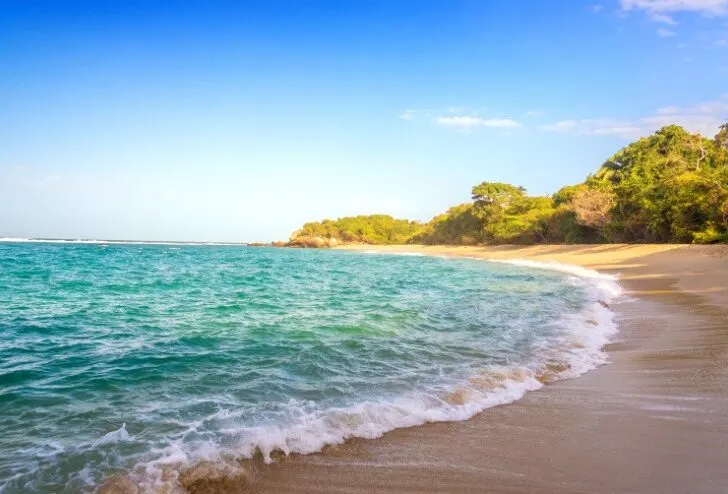
Before returning to Cartagena, we recommend spending a night at Ecohabs Bamboo ($100 USD or $380,000 COL double), one of the best hotels in Colombia. Other than a series of basic, hammock-slung campsites, this is the only lodging within the national park.
Each of its 18 individual huts is surrounded by lush greenery, which you can admire through their vast windows – and which will mean you wake every morning to the sound of monkeys chattering!
To get to Tayrona, you’ll need to take a bus first to Santa Marta, which leave from Cartagena’s bus terminal between 5am and 10pm ($43,000 COL or $10 USD per person). From Santa Marta, you’ll need to take a taxi.
Bearing in mind how extensive the park is – it can take hours to walk from one beach to another – it’s best to arrange your transport beforehand. Your hotel should be able to help you with this. If not, you can join a tour that offers pickup and transport to the park from Santa Marta ($33 USD pp).
As the parks closes during the first two weeks of February, the first two weeks of June, and then the last two weeks of October, these periods are not the ideal time for visiting Colombia. Plan your trip to avoid these dates.
Experiences we don’t recommend
Party with the young and young-at-heart Tierra Bomba Island
Tierra Bomba is one of the most popular islands Cartagena has to offer. It’s located 30 minutes (around two kilometers) from the small port of Castillogrande.
Popular among young backpackers as the little Ibiza of Colombia, with many flocking here to party, especially on the weekends.
Unfortunately, this contributes to the island’s waste problems, which has led to plastic – and extensive noise – pollution.
Consider heading to one of the remote islands in the Islas del Rosario or escaping to Playa Blanca on Isla Barú for a quieter, more authentic experience.
Getting around in Cartagena de Indias, Colombia
Getting around in Cartagena on public transportation can be an experience in itself. Buses within the city area cost only $2,500 COL ($0.6 USD) per ride. Most bus lines – along with their routes and stops – can be seen on the Moovit App.
Please note that the buses are generally not air-conditioned; a long bus ride in the heat of the Cartagena climate can be overwhelming for some.
Within the city walls, walking is easy enough, although you’ll want to avoid the midday heat if possible.
For comfort and safety, we recommend using a taxi. They’re affordable (from $7,000 COL or $1.6 USD per kilometer) and accessible, especially in touristy areas such as Centro, Getsemani, and Bocagrande.
Walking around is easy and quite safe if you stay within the walls and, as it’s a popular tourist area, you’ll see an extensive police presence. However, outside of the walls, we recommend following common protocols such as not wandering around the street at night, taking care of your belongings, and not wearing flashy accessories.
A note about the tours we recommend: as a website, Worldly Adventurer chooses not to include tours available on websites such as Viator and GetYourGuide and instead opts to recommend companies based directly within the countries we write about. Viator and GetYourGuide take hefty commissions, making it more expensive for you – and the companies actually running the tours. There’s also no transparency around who’s actually running the tours they promote.
As a website that prides itself on the quality of its recommendations (established through founder Steph’s almost a decade exploring the continent), this just doesn’t fit with our values. As a result, many of the tours we recommend in this guide are from our local Colombian partner, Impulse Travel. All of their tours aim to support local communities and provide them with a fair wage for their work, whether they’re providing transportation, guiding or teaching. This can work out as a little more expensive for you; however, we guarantee it’s worth the price. You’ll learn far more with one of their tours than an anonymous, often poorly run tour that doesn’t engage with local people and takes you to the same old destinations.
